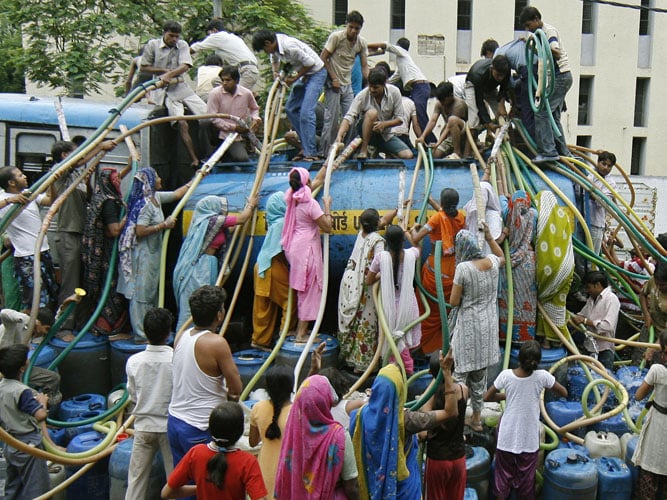
The World is Running Out of Water
CEOs brace for looming global water crisis
Global companies worried about climate change and energy consumption need to consider a third challenge in their sustainability plans, the leader of a Colorado-based engineering firm said Oct. 29 at Thunderbird.
“We have a global water crisis,” said Lee McIntire, president and CEO of CH2M Hill and a 1981 Thunderbird graduate. “You’re going to start reading about it in publications like the Wall Street Journal.”
McIntire said sustainable solutions of the future will be found in the nexus of climate change, energy consumption and water management.
None of the three problems can be solved in isolation because they intersect in various ways. Transporting water, for example, requires huge amounts of energy.
“The people who can find holistic solutions are going to do well,” McIntire said. “If you’re a problem solver, the world is wide open right now.”
Climate change, energy consumption and water management all factor into major projects that CH2M Hill manages at the Panama Canal and the 2012 London Olympics. The company also has taken a leading role in the construction of Masdar, a sustainable city in the heart of Abu Dhabi.
McIntire said many of his clients, which include governments and multinational companies, have caught onto the importance of water management.
“They’ve already noticed the issue,” he said. “They know that they use X amount of water to make their product, and they are starting to list how much water is consumed on the label of the product they make.”
Agriculture companies, meanwhile, are searching for seeds and crops that use less water.
Despite these efforts, many regions are approaching “peak water,” the point where consumers have used more water than what remains in the ground.
“We’ve been draining the aquifers, which is the underground water,” McIntire said. “These take thousands of years to fill up. Now we’re going to have to start building surface water facilities.”
Communities on the fringes of the aquifers will feel the crisis first, along with communities on the fringes of expanding deserts. Finding water for these regions will take resourcefulness and ingenuity.
[This article has been reproduced with permission from Knowledge Network, the online thought leadership platform for Thunderbird School of Global Management https://thunderbird.asu.edu/knowledge-network/]





